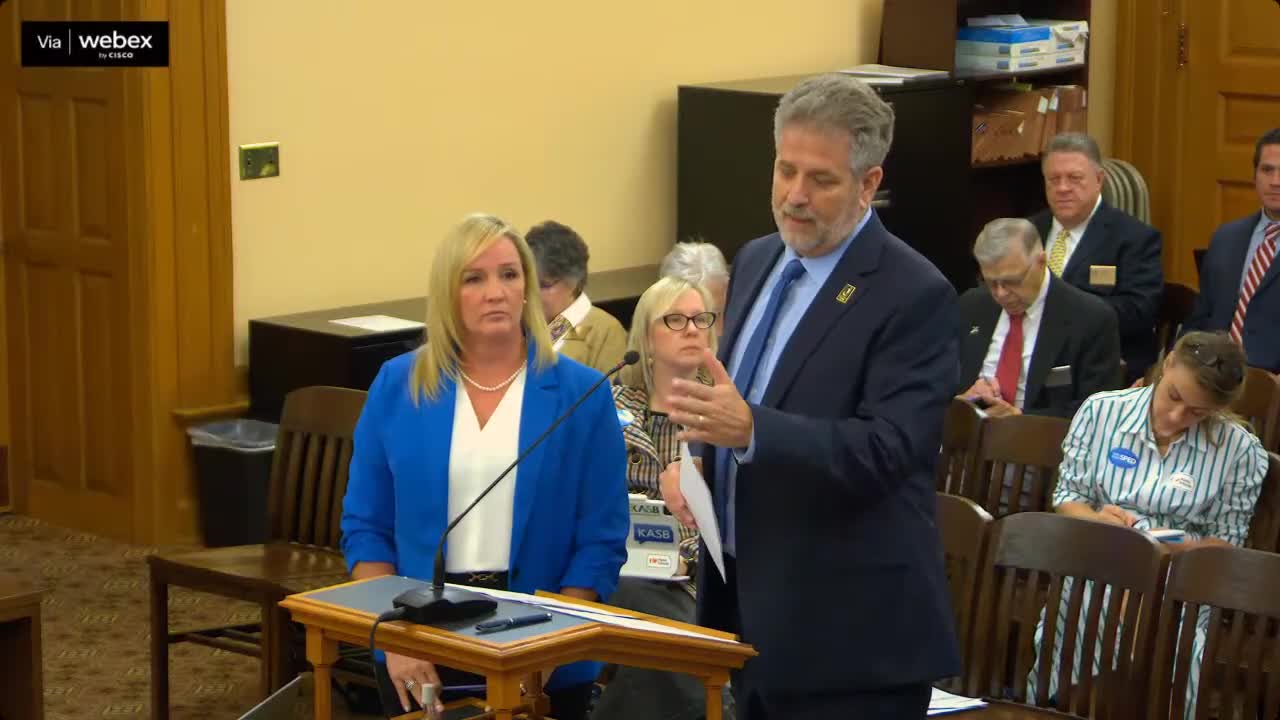Kansas Education Officials Discuss Funding for Special Education Costs
September 04, 2025 | Special Education and Related Services Funding Task Force, Task Forces, Committees, Legislative, Kansas
This article was created by AI summarizing key points discussed. AI makes mistakes, so for full details and context, please refer to the video of the full meeting. Please report any errors so we can fix them. Report an error »

In a recent meeting of the Special Education and Related Services Funding Task Force in Kansas, members gathered to discuss the pressing issues surrounding funding for students with disabilities. The atmosphere was charged with urgency as representatives examined the state's unique challenges compared to national averages. Kansas currently serves 17 percent of its students with disabilities, a figure that rises to nearly 20 percent when including gifted students, surpassing the national average of 15 percent.
The conversation quickly turned to the implications of these statistics. Task Force members expressed concerns about the potential for over-identification of students needing special education services. They emphasized the importance of creating a funding model that discourages such practices while also addressing the economies of scale that come into play once a support system is established.
A significant point of discussion was the financial impact of a proposed funding model. It was revealed that if implemented, the model could lead to an additional $438 million in costs for the state, raising questions about the sustainability of such an increase. Representatives pressed for clarity on how the Kansas State Department of Education (KSDE) could adjust its budget to accommodate these rising costs. With an operating budget of $21 million amidst a larger $6 billion education budget, the challenge of reallocating funds was evident.
The dialogue highlighted a broader concern: how to balance the needs of special education with the overall budgetary constraints faced by the state. Members urged KSDE to explore potential cuts in its budget to help alleviate the financial burden on special education funding. The task force's discussions underscored the complexity of ensuring adequate support for students with disabilities while navigating the fiscal realities of state education funding.
As the meeting concluded, the task force left with a renewed commitment to finding innovative solutions that would not only support Kansas students with disabilities but also ensure the sustainability of the state's education system. The road ahead remains challenging, but the determination to address these critical issues was palpable among the members.
The conversation quickly turned to the implications of these statistics. Task Force members expressed concerns about the potential for over-identification of students needing special education services. They emphasized the importance of creating a funding model that discourages such practices while also addressing the economies of scale that come into play once a support system is established.
A significant point of discussion was the financial impact of a proposed funding model. It was revealed that if implemented, the model could lead to an additional $438 million in costs for the state, raising questions about the sustainability of such an increase. Representatives pressed for clarity on how the Kansas State Department of Education (KSDE) could adjust its budget to accommodate these rising costs. With an operating budget of $21 million amidst a larger $6 billion education budget, the challenge of reallocating funds was evident.
The dialogue highlighted a broader concern: how to balance the needs of special education with the overall budgetary constraints faced by the state. Members urged KSDE to explore potential cuts in its budget to help alleviate the financial burden on special education funding. The task force's discussions underscored the complexity of ensuring adequate support for students with disabilities while navigating the fiscal realities of state education funding.
As the meeting concluded, the task force left with a renewed commitment to finding innovative solutions that would not only support Kansas students with disabilities but also ensure the sustainability of the state's education system. The road ahead remains challenging, but the determination to address these critical issues was palpable among the members.
View full meeting
This article is based on a recent meeting—watch the full video and explore the complete transcript for deeper insights into the discussion.
View full meeting
